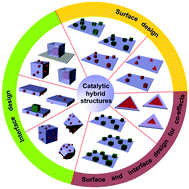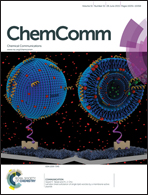Some recent developments in surface and interface design for photocatalytic and electrocatalytic hybrid structures
Abstract
The surface and interface are considered as the crucial features that can be engineered to improve the performance of catalysts. The great advancements in both controlled syntheses and catalytic mechanism studies have paved the way for the rational surface and interface design of catalysts. In this feature article, we overview our recent progress in surface and interface design for well-defined hybrid structures mainly toward the photocatalytic and electrocatalytic applications in which charge carriers play an important role. First, we outline the surface parameters of components including exposed facets, compositions, surface areas and crystal phases that have been tailored toward higher surface activation abilities for electrocatalytic and photocatalytic reactions. Second, we summarize the designing rules for the interface between two components to favor the charge transfer for photocatalytic reactions on the surface. Furthermore, we outline the synergistic effects on photocatalysis and electrocatalysis through the simultaneous control of the surface and the interface, which can also be extended to enhance other catalytic reactions (e.g., CO oxidation). Finally, we discuss the challenges and opportunities for further development of surface and interface design toward catalytic performance tuning.


 Please wait while we load your content...
Please wait while we load your content...